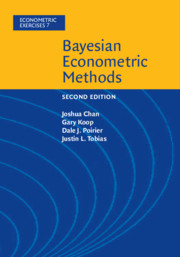Refine search
Actions for selected content:
36807 results in Cambridge Textbooks
5 - Syntax
- from Part 3 - Structure and Meaning
-
-
- Book:
- Introducing Linguistics
- Published online:
- 22 April 2021
- Print publication:
- 21 January 2021, pp 165-218
-
- Chapter
- Export citation
Preface
-
- Book:
- Introducing Linguistics
- Published online:
- 22 April 2021
- Print publication:
- 21 January 2021, pp xi-xvi
-
- Chapter
- Export citation
Dedication
-
- Book:
- Foundations of Comparative Politics
- Published online:
- 24 December 2020
- Print publication:
- 21 January 2021, pp v-vi
-
- Chapter
- Export citation
Part 7 - Language, Cognition, and the Brain
-
- Book:
- Introducing Linguistics
- Published online:
- 22 April 2021
- Print publication:
- 21 January 2021, pp 499-570
-
- Chapter
- Export citation
15 - Policy Making
- from Part IV - Policies and Performance
-
- Book:
- Foundations of Comparative Politics
- Published online:
- 24 December 2020
- Print publication:
- 21 January 2021, pp 315-335
-
- Chapter
- Export citation
Part II - The Polity: Structures and Institutions
-
- Book:
- Foundations of Comparative Politics
- Published online:
- 24 December 2020
- Print publication:
- 21 January 2021, pp 75-172
-
- Chapter
- Export citation
14 - Psycholinguistics
- from Part 7 - Language, Cognition, and the Brain
-
-
- Book:
- Introducing Linguistics
- Published online:
- 22 April 2021
- Print publication:
- 21 January 2021, pp 501-534
-
- Chapter
- Export citation
12 - First Language Acquisition
- from Part 6 - Language Acquisition
-
-
- Book:
- Introducing Linguistics
- Published online:
- 22 April 2021
- Print publication:
- 21 January 2021, pp 417-459
-
- Chapter
- Export citation
Part 4 - Language Typologies and Change
-
- Book:
- Introducing Linguistics
- Published online:
- 22 April 2021
- Print publication:
- 21 January 2021, pp 251-324
-
- Chapter
- Export citation
Contents
-
- Book:
- Introducing Linguistics
- Published online:
- 22 April 2021
- Print publication:
- 21 January 2021, pp v-x
-
- Chapter
- Export citation
Part 6 - Language Acquisition
-
- Book:
- Introducing Linguistics
- Published online:
- 22 April 2021
- Print publication:
- 21 January 2021, pp 415-498
-
- Chapter
- Export citation
16 - Public Spending and Public Policies
- from Part IV - Policies and Performance
-
- Book:
- Foundations of Comparative Politics
- Published online:
- 24 December 2020
- Print publication:
- 21 January 2021, pp 336-355
-
- Chapter
- Export citation
Part I - The State: Origins and Development
-
- Book:
- Foundations of Comparative Politics
- Published online:
- 24 December 2020
- Print publication:
- 21 January 2021, pp 13-74
-
- Chapter
- Export citation
11 - The Media
- from Part III - Citizens, Elites and Interest Mediation
-
- Book:
- Foundations of Comparative Politics
- Published online:
- 24 December 2020
- Print publication:
- 21 January 2021, pp 230-247
-
- Chapter
- Export citation
Part 1 - Introduction
-
- Book:
- Introducing Linguistics
- Published online:
- 22 April 2021
- Print publication:
- 21 January 2021, pp 1-22
-
- Chapter
- Export citation

Plant Ecology
- Origins, Processes, Consequences
-
- Published online:
- 19 January 2021
- Print publication:
- 17 April 2017
-
- Textbook
- Export citation

Marketing Research Methods
- Quantitative and Qualitative Approaches
-
- Published online:
- 15 January 2021
- Print publication:
- 28 January 2021
-
- Textbook
- Export citation

Bayesian Econometric Methods
-
- Published online:
- 14 January 2021
- Print publication:
- 15 August 2019
-
- Textbook
- Export citation
6 - A/D and D/A conversion
-
- Book:
- Digital Signal Processing
- Published online:
- 24 July 2021
- Print publication:
- 14 January 2021, pp 331-408
-
- Chapter
- Export citation
11 - Fast Fourier transform (FFT)
-
- Book:
- Digital Signal Processing
- Published online:
- 24 July 2021
- Print publication:
- 14 January 2021, pp 707-760
-
- Chapter
- Export citation
